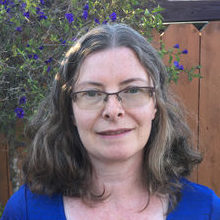Administrative Core
Summary
The Administration Core (AC) will provide the leadership and support needed to realize the Center’s overall goals of addressing complex challenges related to Superfund contaminants including: characterizing mixed and early-life exposures and perinatal health effects in disadvantaged communities; understanding interactions among mixed exposures at hazardous waste sites and in health impact assessment; and, developing novel methods for in situ remediation and remediation of persistent chemicals. Our goals address all four SRP mandates and the needs of key stakeholders, including those tasked with advancing California’s Human Right to Water Law. The Directors and RT Coordinator will work closely with Project and Core Leaders and the External Advisory Board (EAB), engage in regular bi-directional communication and information exchange with the Stakeholder Advisory Board (SAB), plan and coordinate Center activities, and generate and share timely information and tools (e.g., remediation technology, data and analytical tools) with NIEHS SRP and organizations that can improve public health through regulatory and policy change. In Aim 1, the Directors and RT Coordinator will hold monthly Center meetings to coordinate overall research progress and to foster, plan, facilitate, and monitor interdisciplinary research and activities across our Center, and between Centers. They will also hold smaller focused meetings such as weekly ToxicTeam meetings focused on data science and sharing. They will review progress with the EAB at an annual meeting and interim meetings. In Aim 2, the Directors and RT Coordinator will interact with the SAB such as by convening expert committees and hosting workshops and seminars to develop and apply the Key Characteristics (KCs) of Hazard Identification and co- hosting panels at meetings of mutual interest including those organized by stakeholder organizations. In Aim 3, the Directors and RT Coordinator will support IIRT by identifying and sharing opportunities for interaction and facilitating related events; by developing plain language summaries and lightning talks with the Trainees; and by sharing KC, epidemiological, and exposure data to support assessment, with agencies including CalEPA. In Aim 4, the AC will work with campus offices to license or commercialize technologies and identify pilot sites to test in situ remediation technologies with Bruce Marvin at Geosyntec. In Aim 5, we will host interactive workshops and meetings on cross-cutting topics such as characterization of early-life exposures and interaction of mixtures in health assessment and remediation, using an effective format and presentation-style that is accessible to diverse stakeholders and community organizations. The Directors and RT Coordinator will coordinate with RETCC, to ensure a holistic Trainee experience and to facilitate trans- and interdisciplinary training and research opportunities; with DMAC, to promote and share diverse datasets with stakeholders and SRP; and with CEC, to engage with community and environmental justice organizations in Center activities.
Core Leadership

Dr. Martyn Smith
Core Co-Leader
Professor of the Graduate School
Professor Emeritus, Environmental Health Sciences
University of California, Berkeley

Dr. Lisa Alvarez-Cohen
Core Co-Leader
Fred and Claire Sauer Professor of Environmental Engineering
Department of Civil and Environmental Engineering, College of Engineering
University of California, Berkeley

Dr. Cliona McHale
Research Translation Coordinator
Research Specialist, School of Public Health
University of California, Berkeley
Core Update
Martyn Smith, Professor of Toxicology and Director of the UC Berkeley Superfund Research Program (the Center) and Deputy Director Lisa Alvarez-Cohen, Professor of Civil and Environmental Engineering and Project 6/Core C Co-Leader, will lead a concerted effort to directly coordinate the efforts and needs of both our biomedical and engineering researchers (Center Team). The main goals of Core A are to coordinate the administrative needs of the Center, facilitate the collaboration of its individual projects and cores, prepare necessary reports, and liaise with federal and state agencies and NGOs to inform and increase the impact ofour work. The Directors will use individual and recurring Center Team meetings to facilitate Program cooperation, collaboration, and cohesion by discussing Center news and research and personnel updates. Presentations at these meetings will cover individual research, identify the role of individual research in the Program, and create opportunities to identify new synergies. The Directors will use their relationships with peers at US EPA, US EPA Region 9, ATSDR, WHO/IARC, CalEPA, CA Department of Public Health, CA Breast Cancer Research Program, and other state and local agencies and NGOs to coordinate research, seek collaboration opportunities, and maintain important bi-directional communication. Director Smith is working on projects with IARC, US EPA and CalEPA and Deputy Director Alvarez-Cohen works with EPA Region IX and is an ATSDR Board member, giving us further access to these important agency partners. The Directors will encourage Center Leaders to maintain 2-way communication with stakeholders. The Directors will encourage our Center Team to promote our work by publishing papers, giving presentations, and attending scientific meetings. The RTC Communication Specialist will gather information from Center Team meetings and interviews and then work with the Directors to coordinate Center update dissemination through our web site, social media, and other means. The Directors will provide strong support for our Training Core Leader and seek out Trainee award and presentation opportunities. Some Center in-house administrative support will be transferred to UC Berkeley’s Campus Shared Services, including financial reporting, Human Resources, procurement, and reimbursements. The Center Manager’s effort will be reduced to part-time. With his direct knowledge of Center operations and planning, Mr. Brockett will be the Center’s liaison with CSS and he will provide limited administrative Center support, draft reports, set meetings, and manage travel. Working with the Communication Specialist and by participating in Center Team and Trainee meetings he will collect information for reporting to NIEHS via the SRP Data Collection Form and CareerTrac. The Directors identified an External Scientific Advisory Board of experts in their fields to advise and review our Program. The Board will meet annually with our Center Team.
Core News
In 2016, Program Director Martyn Smith was appointed the Kenneth and Marjorie Kaiser Endowed Chair in Cancer Epidemiology.
Selected Presentations: Martyn Smith
2017
- “Key characteristics of carcinogens as a basis for organizing data on mechanisms of carcinogenesis”, Invited Speaker at University of California at Davis, Pharmacology and Toxicology Seminar Series, January 10, 2017.
2016
- “Benzene: The worlds most important chemical.” Invited speaker for ETOX10A at University of California at Davis, Feb 23, 2016.
- “Exposomics of Breast Cancer”, Speaker at California Breast Cancer Research Program meeting, Berkeley CA, March 1, 2016.
- “Exposomics and cumulative risk”. Invited Keynote Speaker at Symposium on Environment and Health, Perelman School of Medicine, University of Pennsylvania, Philadelphia, June 13, 2016.
- “Key characteristics of carcinogens”, Invited speaker at Amgen, South San Francisco, CA, October 24, 2016.
- “Using exposomics to assess cumulative risks from multiple environmental stressors”. Plenary speaker and Invited Chair, 8th Princess Chulabhorn International Science Congress, Bangkok, Thailand, November 14-18, 2016.
- “Using exposomics to assess cumulative risks from multiple environmental stressors”. Invited Seminar at Rollins School of Public Health, Emory University, Atlanta GA, December 9, 2016.
Selected Publications
Martyn Smith, Selected other publications of interest:
2016
Walker DI, Uppal K, Zhang L, Vermeulen R, Smith MT, Hu W, Purdue MP, Tang X, Reiss B, Kim S, Li L, Huang H, Pennell KD, Jones DP, Rothman N, Lan Q (2016) High-resolution metabolomics of occupational exposure to trichloroethylene. Int J Epidemiol. Oct;45(5)1517-27. PMCID: PMC5100622. [PDF]
Portier CJ, Armstrong BK, Baguley BC, …, Smith MT, et al. (2016) Differences in the carcinogenic evaluation of glyphosate between the International Agency for Research on Cancer (IARC) and the European Food Safety Authority (EFSA). J Epidemiol. Community Health. Aug;70(8):741-5. PMCID: PMC4975799. [PDF]
Machiela MJ, Lan Q, Slager SL, Vermeulen RC … Smith MT, et.al. (2016) Genetically predicted longer telomere length is associated with increased risk of B-cell lymphoma subtypes. Hum Mol Genet. Apr 15;25(8):1663-76. PMCID: PMC4854019. [PDF]
Sampson JN, Wheeler WA, Yeager M, Panagiotou O, Wang Z, Berndt SI, Lan Q, …, Smith MT, et al. (2015) Analysis of Heritability and Shared Heritability Based on Genome-Wide Association Studies for Thirteen Cancer Types. J Natl Cancer Inst. Oct 12;107(12). PMCID: PMC4806328. [PDF]
Smith MT, Guyton KZ, Gibbons CF, Fritz JM, Portier CJ, Rusyn I, DeMarini DM, Caldwell JC, Kavlock RJ, Lambert P, Hecht SS, Bucher JR, Stewart BW, Baan R, Cogliano VJ, Straif K (2016) Key Characteristics of Carcinogens as a Basis for Organizing Data on Mechanisms of Carcinogenesis. Environ Health Perspect. Jun;124(6): 713-721. PMCID: PMC4892922. [PDF]
Carlos-Wallace FM, Zhang L, Smith MT, Rader G, Steinmaus C (2016) Parental, In Utero, and Early-Life Exposure to Benzene and the Risk of Childhood Leukemia: A Meta-Analysis. Am J Epidemiol. Jan 1;183(1):1-14. PMCID: PMC4751231. [PDF]
Fejerman L, Sanchez SS, Thomas R, Tachachartvanich P, Riby J, Gomez SL, John EM, Smith MT (2016) Association of lifestyle and demographic factors with estrogenic and glucocorticogenic activity in Mexican American women. Carcinogenesis. Sep;37(9):904-11. PMCID: PMC5008251. [PDF]
Dennis KK, Auerbach SS, Balshaw DM, Cui Y, Fallin MD, Smith MT, Spira A, Sumner S, Miller GW (2016) The Importance of the Biological Impact of Exposure to the Concept of the Exposome. Environ Health Perspect. Jun 3. [Epub ahead of print]. DOI: 10.1289/EHP140. PMID: 27258438. (PMC Journal – In Process). [PDF]
Bassig BA, Zhang L, Vermeulen R, Tang X, Li G, Hu W, Guo W, Purdue MP, Yin S, Rappaport SM, Shen M, Ji Z, Qiu C, Ge Y, Hosgood HD, Reiss B, Wu B, Xie Y, Li L, Yue F, Freeman LE, Blair A, Hayes RB, Huang H, Smith MT, Rothman N, Lan Q (2016) Comparison of hematological alterations and markers of B-cell activation in workers exposed to benzene, formaldehyde and trichloroethylene. Carcinogenesis. Jul;37(7):692-700. PMCID: PMC4936387. [PDF]
2015
Landrigan PJ, Wright RO, Cordero JF, Eaton DL, Goldstein BD, Hennig B, Maier RM, Ozonoff DM, Smith MT, Tukey RH (2015) The NIEHS Superfund Research Program: Twenty-Five Years of Translational Research for Public Health. Environ Health Perspect. Oct;123(10)909-18. PMCID: PMC4590764. [PDF]
Loomis D, Guyton K, Grosse Y, El Ghissasi F, Bouvard V, Benbrahim-Tallaa L, Guha N, Mattock H, Straif K; International Agency for Research on Cancer Monograph Working Group, IARC, Lyon, France (2015) Carcinogenicity of lindane, DDT, and 2,4-dichlorophenoxyacetic acid. Lancet Oncol. Aug;16(8):891-2. doi: 10.1016/S1470-2045(15)00081-9. PMID: 26111929. [PDF]
Pearce NE, Blair A, Vineis P, Ahrens W, Andersen A, Anto JM, Armstrong BK, Baccarelli AA, Beland FA, …, Smith MT, et al. (2015) IARC Monographs: 40 Years of Evaluating Carcinogenic Hazards to Humans. Environ Health Perspect. Jun;123(6):507-14. PMCID: PMC4455595. [PDF]
Sampson JN, Wheeler WA, Yeager M, Panagiotou O, Wang Z, Berndt SI, Lan Q, …,Smith MT, et al. (2015) Analysis of Heritability and Shared Heritability Based on Genome-Wide Association Studies for Thirteen Cancer Types. J Natl Cancer Inst. Oct 12;107(12). PMCID: PMC4806328. [PDF]
2014
Wild CP, Bucher JR, de Jong BW, Dillner J, von Gertten C, Groopman JD, Herceg Z, Holmes E, Holmila R, Olsen JH, Ringborg U, Scalbert A, Shibata T, Smith MT, Ulrich C, Vineis P, McLaughlin J (2014) Translational cancer research: balancing prevention and treatment to combat cancer globally. J Natl Cancer Inst. Dec 16;107(1):353. PMCID: PMC4334834. [PDF]
2013
Herceg Z, Lambert MP, van Veldhoven K, Demetriou C, Vineis P, Smith MT, Straif K, Wild CP (2013) Towards incorporating epigenetic mechanisms into carcinogen identification and evaluation. Carcinogenesis. Sep;34(9):1955-67. PMCID: PMC3765050. [PDF]